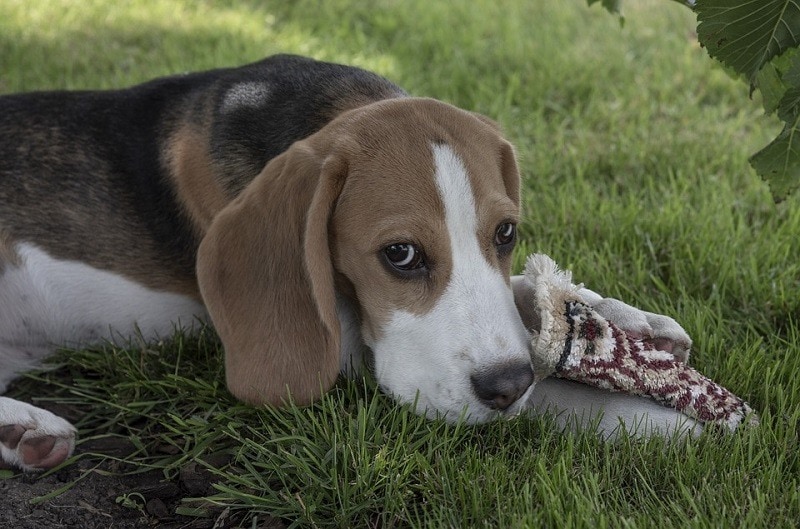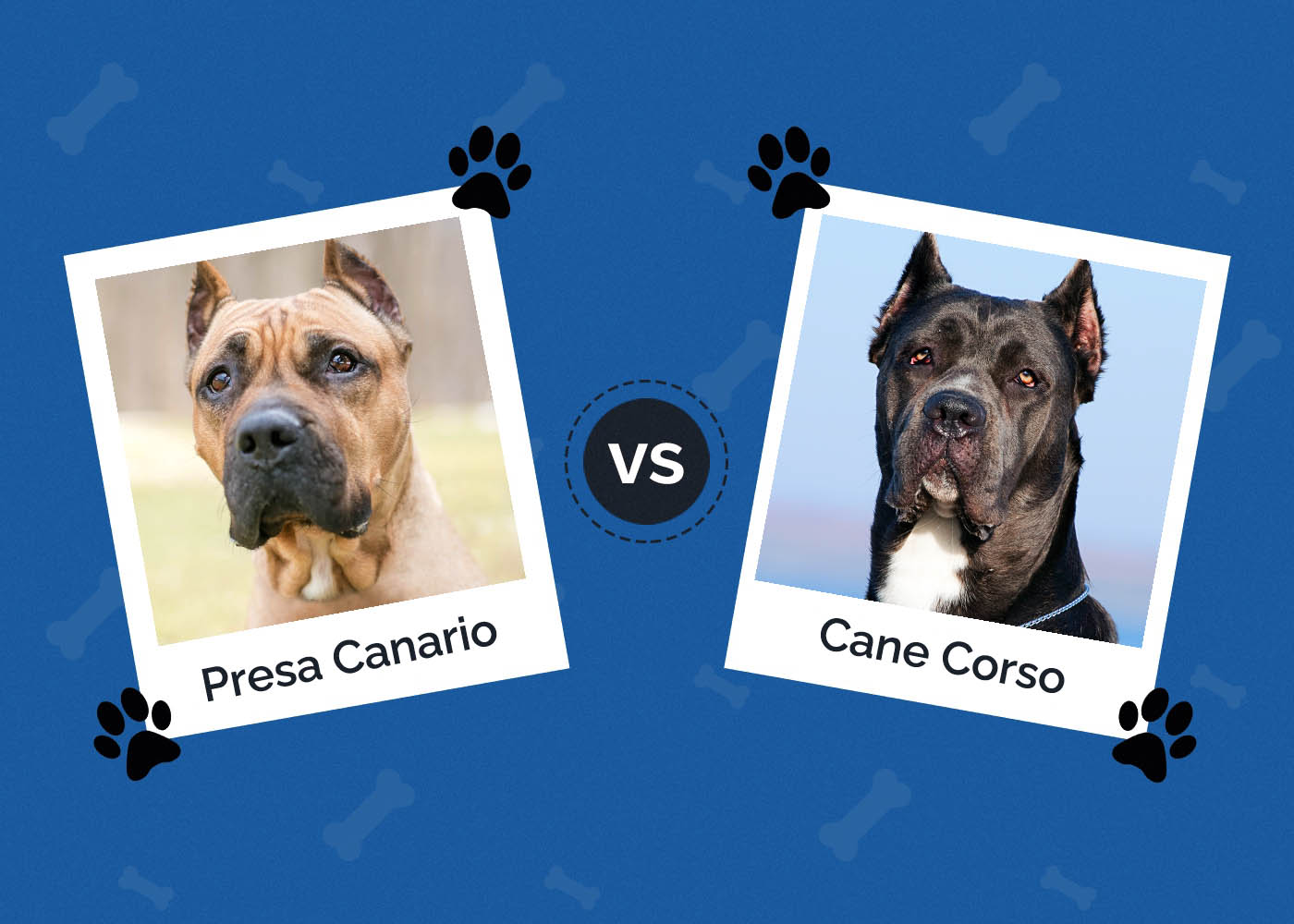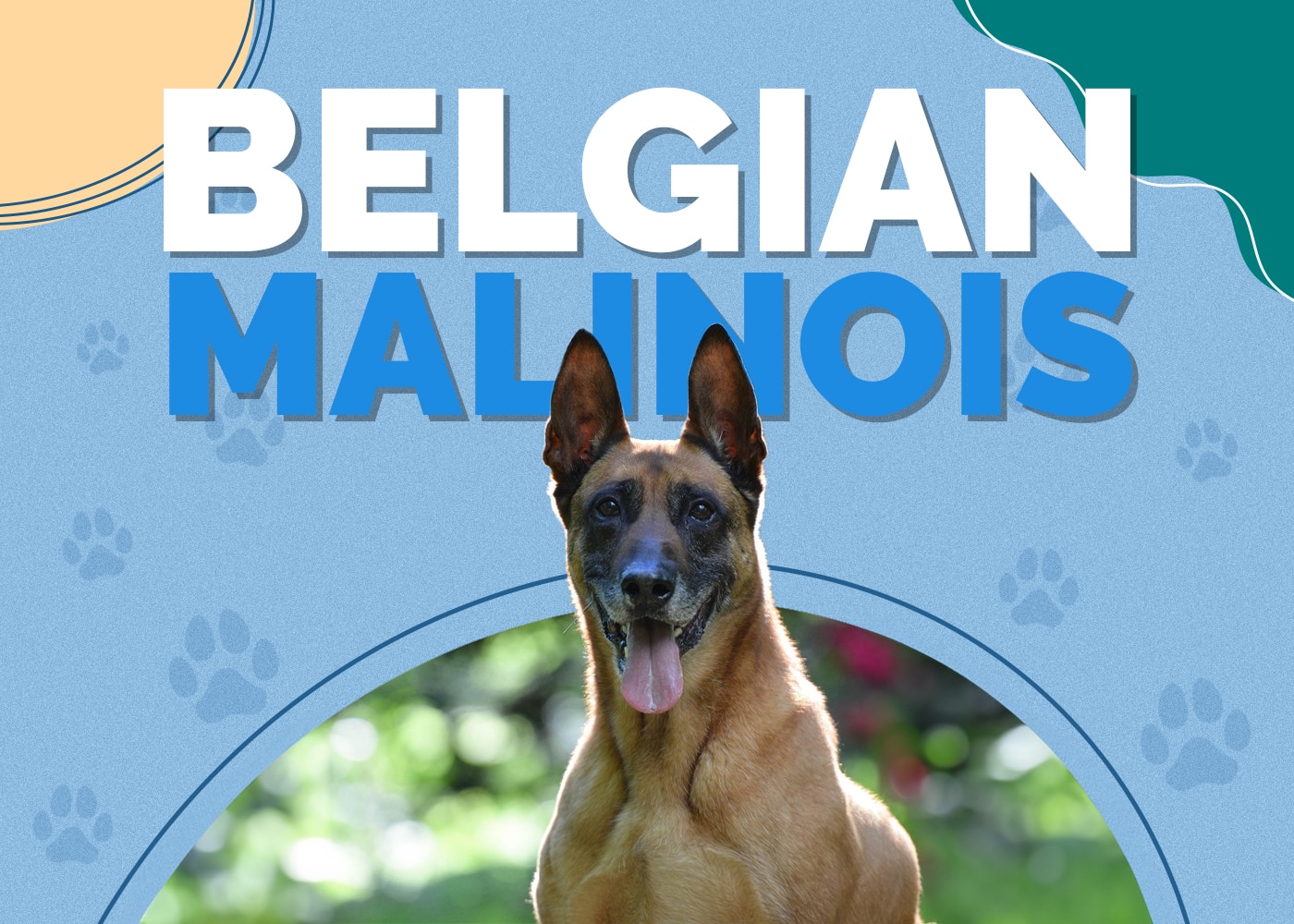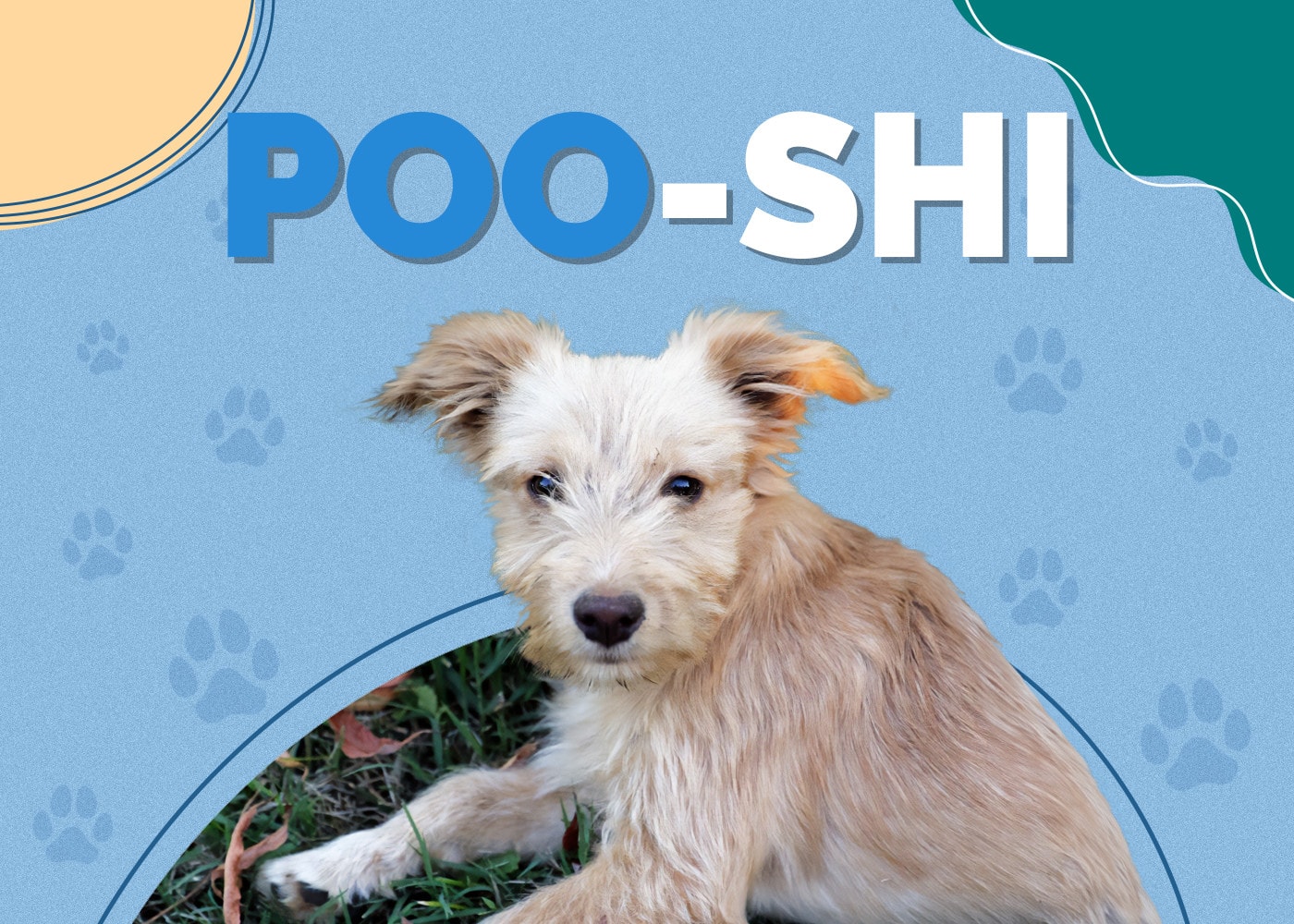Bagle Hound (Basset Hound & Beagle Mix): Info, Pictures, Facts

Updated on
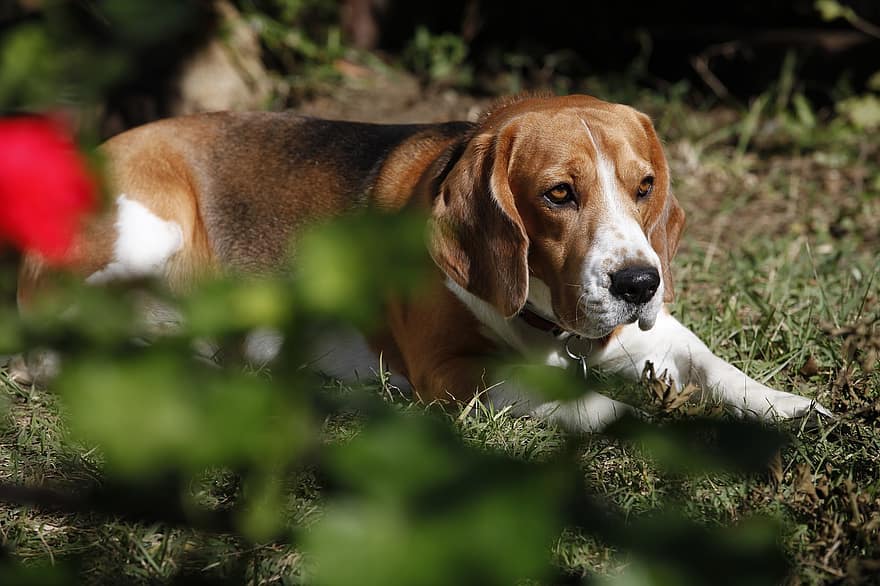
Height:
12-15 inches
Weight:
30-50 pounds
Lifespan:
10 to 15 years
Colors:
Tricolor, brown, tan, orange, white
Suitable for:
Families, seniors, those looking for a low-maintenance and low-energy dog
Temperament:
Affectionate, loving, cheerful, playful, gentle
Known commonly as a Bagle Hound, the Basset Hound and Beagle mix is a unique combination, as these two breeds can have very different personalities. That said, there are similarities, and the combination makes for an interesting and unique breed. They are short-haired dogs who both belong to the Hound grouping of dog breeds, renowned for their scenting and hunting skills. These dogs are usually a first-generation hybrid, so it’s impossible to predict which particular traits your Bagle Hound will inherit. The best method to get a basic idea of Bagels is to take a look at the parent breeds, and this will help give you a general representation of possible characteristics.
The Basset Hound is a short-legged scenting hound originally bred for hunting. The name Basset comes from the French word “bas,” meaning low, and it’s plain to see why. These dogs are short in stature, but this is mostly due to their short legs, as in reality, they are fairly big dogs. They have an incredible sense of smell, one of the best in the world. Despite their active history, they are fairly laidback dogs who love to lounge on the sofa with their owners.
Beagles are also a part of the Hound family and were originally bred for scenting and hunting small prey. Beagles are a popular breed for families due to their even-temperament, good nature, small size, and lack of inherited health issues. Don’t let the size fool you, though, as they are fairly high-energy and active dogs.
If both these parent breeds fit your description of an ideal companion, read on to find out more about this unique pooch!
Bagle Hound Puppies
This Hound is a fairly new breed and so may not be in high demand — yet. Being such a unique breed of dog, Bagle Hound puppies can be difficult to find. A reputable breeder who can provide you with a history of the parents is ideal. If you can find one that needs a home in a shelter, that would be even better.
You can try your luck at a dog shelter, where there might be a couple of these dogs. The parent breeds of the Bagle Hound are very popular. Always ask what the reason for the dog being at the shelter is just to keep in mind if there are any behavioral concerns you should be aware of. Remember to take your pup to the vet once you have them home and enjoy this life-changing experience of owning a Bagle Hound.
3 Little-Known Facts About the Bagle Hound
1. They have an incredible sense of smell.
Basset Hounds have an amazing sense of smell, second only to the Bloodhound. These dogs are built for sniffing: They are low to the ground, their long and droopy ears sweep the scent off the ground and toward their noses, and finally, the skin beneath its chin and face, called the dewlap, helps trap the scent.
Beagles are almost as adept at scenting as Basset Hounds, and although they are one of the smallest hound breeds, they are still popular among hunters and search-and-rescue teams and are used for sniffing out contraband for law enforcement.
With parents like this, you can be sure your Bagle Hound will have an amazing sense of smell too.
2. Bagle Hounds are a vocal breed.
Basset Hounds have a distinctive howl that can travel long distances, and they will often howl or bay rather than bark. Beagles are also known for their loud vocalizations, and some speculate that the name Beagle comes from the French word “beguile,” loosely translated as “open throat.”
Either way, with both parent breeds being hounds and having reputations for their loud baying, Bagle Hounds are bound to have the same loud vocal traits.
3. Swimming is not their strong suit.
Basset Hounds have some issues when it comes to water. Their short and stubby legs, plus their large droopy ears, make swimming a challenge. They carry a great deal of their weight in the front of their bodies, and so while they can swim, they are not that good at it.
While they are likely to be better than Basset Hounds, in general, Beagles don’t enjoy swimming or being in the water.
If you are looking for a pal to do laps in the pool with, the Bagle Hound may not be the best choice.

Temperament & Intelligence of the Bagle Hound 🧠
The Bagle Hound is a friendly and easy-going breed that is playful and occasionally mischievous. Basset Hounds are known to be a laidback breed, and so are Bagles. They do have the Beagle’s energy and propensity for mischief, though, so this makes for a unique mix that can swing between these two extremes. You can be sure of a vocal pooch, though, and one with a nose to rival the Bloodhound’s.
Are These Dogs Good for Families? 🏡
Bagle Hounds are a family-friendly dog that loves to be around their owners. They are gentle and sweet dogs that are highly tolerant of children and are rarely aggressive. The laidback personality of Bagle Hounds makes them an ideal choice for families who are looking for a dog who is not too boisterous and doesn’t require massive amounts of exercise. Bagle Hounds are also easy to groom, making them an easy-going and low-maintenance family pooch.
Does This Breed Get Along With Other Pets? 🐶 😽
Bagle Hounds are friendly, gentle, and non-aggressive and will, therefore, be likely to make fast friends with other dogs and pets, provided that they are socialized at a young age. Both of the Bagles parent breeds were historically pack dogs, so they are arguably happier with other family dogs than being the only dog in the house. This trait also makes Bagles attached to the entire family pack, so they are far less likely to attach to one owner and suffer separation anxiety when left at home. This is a great plus for owners who are away from home frequently, but of course, your pooch is always happiest in your company.
Things to Know When Owning a Bagle Hound
Food & Diet Requirements 🦴
The most important factor when it comes to the diet of Bagle Hounds is overfeeding. These dogs are prone to obesity and will keep eating until they just can’t anymore. This means you should avoid freely feeding them and avoid table scraps and too many treats (even if those sad-looking eyes can easily convince you otherwise!). Bagle Hounds should ideally be fed two separate, smaller meals, as they are prone to eating quickly. This gobbling of food will cause excess gas and bloat, which can be painful for them.
Bagle Hounds will do well on a diet that is high in protein and low in fat to avoid piling on the extra pounds. While most commercial kibble has sufficient protein, these are usually plant-based, which may not be ideal for your pooch. We recommend occasionally supplementing dry kibble with high-quality lean-meats and canned food.
Any excess empty-calorie filler ingredients that can often come in commercial dry dog foods should be avoided as much as possible, to avoid the potential for obesity. These include soy, corn, wheat, and other harmful ingredients. Fatty meats, dairy, and sugar are also off-limits. This makes it all the more vital that you source the best possible commercial dry food that you can, one that doesn’t contain these empty-calorie filler ingredients.
Most dogs need around 25-30 calories per pound per day on average to maintain a healthy weight. Depending on their age, size, and energy levels, Bagle Hounds will need to get anywhere from 900-1,500 calories a day.
Exercise 🐕
With the Basset Hounds reputation for laziness, Bagle Hounds won’t require — or desire — huge amounts of exercise. But like all dogs, daily exercise is essential for their health and wellbeing. An hour a day of concentrated exercise is sufficient, and this can include exercises like walking, running, and fetch and ball games.
Swimming should be avoided, as these pooches aren’t the most athletic swimmers out there, but they’ll likely avoid water at all costs, anyway!
An important point to remember is to keep a leash on your Bagle Hound at all times. Even the most well-trained Bagle Hound will find it difficult to resist an interesting scent, and no amount of signaling or promise of treats will get them off the trail. This is why scent training is essential with Bagle Hounds.
Training 🦮
Basset Hounds can be a somewhat stubborn breed, making them a challenge to train. But they are intelligent animals, and if you are patient, you will win the battle in the end. Beagles, on the other hand, are eager-to-please little pooches who are a breeze to train and will enthusiastically respond to your commands. It is a flip of the coin which trait will be more predominant in your Bagle Hound, but you should soon find out!
A Bagle Hound has parent breeds that both have incredible noses. This strong sense of smell can be both a gift and a curse during training; however, you can use it to your advantage. Another advantage is the Bagle Hound’s love of food, so you can use both these traits to aid in your Bagle Hound’s training. This useful method for pooches with strong scenting capabilities is called scent training.
Begin by creating a food trail with few distractions, and reward your pup with food when they find the hidden object. Keep making the trails more complex, and slowly add in a few distractions and correcting commands, with rewards again when your commands are followed. This training will help keep your Bagle Hound well-behaved during off-leash walks and teach them to obey commands even when following an irresistible scent.
This serves as a mentally and physically stimulating exercise for your pooch, will aid in your bonding, and will keep them safe from running away into traffic. The keys to success in this or any other type of training are consistency, repetition, and most importantly, patience.
Grooming ✂️
The Bagle Hound is a low-maintenance pooch that will only need a brushing weekly at most. They are medium shedders, and this occasional brushing will keep hairs from your clothing and furniture (and those places where you cannot possibly understand how dog hair could have gotten into!).
The Bagle Hound does have one disadvantage when it comes to cleanliness, though their height. Being so low to the ground means your Bagle will likely get far filthier than most other breeds. They will consequently need bathing more regularly than other dogs. Basset Hounds are also known for their wrinkly excess skin, and these folds will need to be regularly checked and cleaned to prevent infections.
A major point of attention with Bagle Hound grooming is their ears. The large, droopy ears should be checked regularly for redness and infection, as the reduced airflow caused by their size can cause infection and yeast overgrowth. Keeping them dry after swimming or bathing will assist in preventing this, as well as regular checks and gentle cleaning inside the ear canal.
Health and Conditions ❤️
Basset Hounds and Beagles are both healthy breeds that can live up to 15 years, and the Bagle Hound has the same healthy resilience. Due to their diverse genetics, they have the advantage that mixed breeds have of being tougher and stronger than purebred dogs. However, as with any mixed breed, Bagle Hounds are susceptible to the health issues of their parent breeds, and there are concerns to be aware of.
Hip and elbow dysplasia are fairly common, and this disorder can lead to painful arthritis in Bagle hounds later in life. Another joint disorder, luxating patella, is known to occur commonly in Basset Hounds. Von Willebrand’s disease can affect your pup’s blood, and bloat and epilepsy are other common disorders among hounds.
A rare disease that is unique to Beagles, Musladin-Leuke Syndrome, or MLS, could affect your Bagle Hound. This is a serious condition that can affect multiple organs and your dog’s skin, drastically reducing their lifespan.
There are several eye diseases that can affect Hounds, including glaucoma, which is common in Bassets, cherry-eye, and entropion or ectropion eyelids, which are both disorders of the eyelids rolling inward or outward and affecting vision.
Bagle Hounds love food and will often eat faster than you can say “stop.” This makes them highly prone to bloat, and feeding them multiple small meals in the day as opposed to one meal will help reduce this.
- Bloat
- Ear infections
- Glaucoma
- Entropion or Ectropion eyelids
- Cancer
- Hip dysplasia
- Patella luxation
- Von Willebrand’s disease
- MLS

Male vs Female
If you have read this far and have decided the Bagle Hound may just be the breed for you, the age-old question of male vs. female is all that’s left to decide. The first important point to note is that with any breed of dog, personality and temperament can vary greatly from dog to dog, and this is mostly caused by their upbringing and environment. There are a few small differences in male and female Bagle Hound dogs, but these are most prominent if they are not spayed or neutered.
Basset Hounds in particular are said to be one of the breeds where sex makes the least difference in temperament and personality. But of course, the added Beagle genetics may sway things a little.
Male Bagle Hounds are usually slightly bigger and weigh more than females, are said to be more playful, and love nothing more than being in the center of whatever is going on. Females are said to be more independent and content to do their own thing.
Final Thoughts
The Bagle Hound is a friendly and eager-to-please pooch that loves people and children, and this makes them a wonderful choice as a family pet. They are a laidback and mellow breed that doesn’t require tons of exercise, they are easy to train, and they have low-maintenance grooming needs. They are also never aggressive, are highly affectionate, and love nothing more than cuddling with their owners on the sofa.
If you are looking for a low-maintenance, laidback, and highly lovable family dog that doesn’t need to be exercised for hours a day, the Bagle Hound may just be the ideal choice for your family.
See Also:
- Beagle Bloodhound Mix: Pictures, Care Guide, Temperament & Traits
- Bloodhound Basset Mix: Pictures, Care Guide, Temperament & Traits
Featured Image Credit: Pikist



